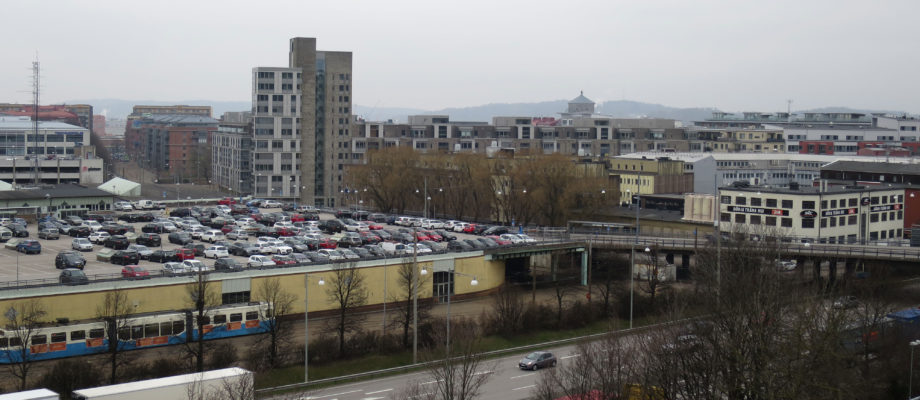NEW STUDY. Smart noise-dampening design, quiet rooms in the dwelling, but also increased acceptance of high sound levels in residential environments. That is believed to explain why a relatively newly developed area in central Gothenburg, located near a busy traffic corridor, was not perceived to be nearly as noisy as expected.
“Those who choose to live in this area may be a select group that gives priority to proximity to the central parts of the city and perhaps accepts a higher sound level,” says Helena Hasslöf, registered doctor of medicine and doctoral student at Occupational and Environmental Medicine, Sahlgrenska Academy. “It could also be that the housing shortage in central cities increases tolerance of what people accept in their residential environment.”
The area studied is located in Gårda in central Gothenburg, next to routes E6/E20, with trams and a railway bridge as well as other sources of noise. The results in the report are based on calculations of noise levels in the area and the residents’ own perceptions about how much they are disturbed.
The material is being presented at a time when there are discussions about the lack of housing in central cities, changing noise rules and dense building developments, particularly in the central parts of large cities.
Few considered themselves disturbed
What the researchers expected to find was based partly on an earlier study in Klippan, an area in Gothenburg that is subjected to similar noise levels. The proportion of people there who were disturbed was over 30 percent. However, this time the survey of residents presented a very different picture.
In the Gårda neighborhood, only 7 percent of the residents were classified as disturbed by traffic noise, compared with an anticipated 25 percent. In the noisiest parts (60–70 decibels), 12 percent were disturbed by noise. To be counted as disturbed by noise, residents had to state that they were “rather” disturbed, “very” disturbed or “extremely” disturbed.
The area’s design, including noise barriers and U-shaped building structures, is thought to be part of the reason that so few considered themselves disturbed. Ninety-six percent indicated that there was silence inside the residence, and 82 percent said they have a completely silent room. These figures are higher than those found in Klippan, where the degree of disturbance was higher and the building structures that screen noise sources are not the same as in Gårda. New construction methods, such as effective sound insulation, could also have contributed to the perceived degree of disturbance.
Sleeping problems and stress
Problems caused by traffic noise include perceived disturbance; sleeping problems and stress reactions in the body; increased risk of cardiovascular disease; impaired understanding of speech and communication; and impaired learning and performance.
The fact that current building standards often can contribute to a good sound environment indoors is described in the 2017 environmental health report by the Public Health Agency of Sweden. At the same time, the noisy outdoor environment by residences remains.
“Although you can use modern construction techniques to create good sound environments indoors, you are still exposed to a noisy environment outdoors in the vicinity of the residence,” Helena Hasslöf points out. According to the 2017 environmental health report, studies have shown that effects of the outdoor environment cannot be ignored from a health perspective.”
Title: Störningar från trafikbuller bland boende i nybyggt område i Gårda, Göteborg; http://www.amm.se/wp-content/uploads/2018/03/Storningar-fran-trafikbuller-bland-boende-i-nybyggt-omrade-i-Garda-Goteborg-180315.pdf
TEXT: MARGARATA GUSTAFSSON KUBISTA











